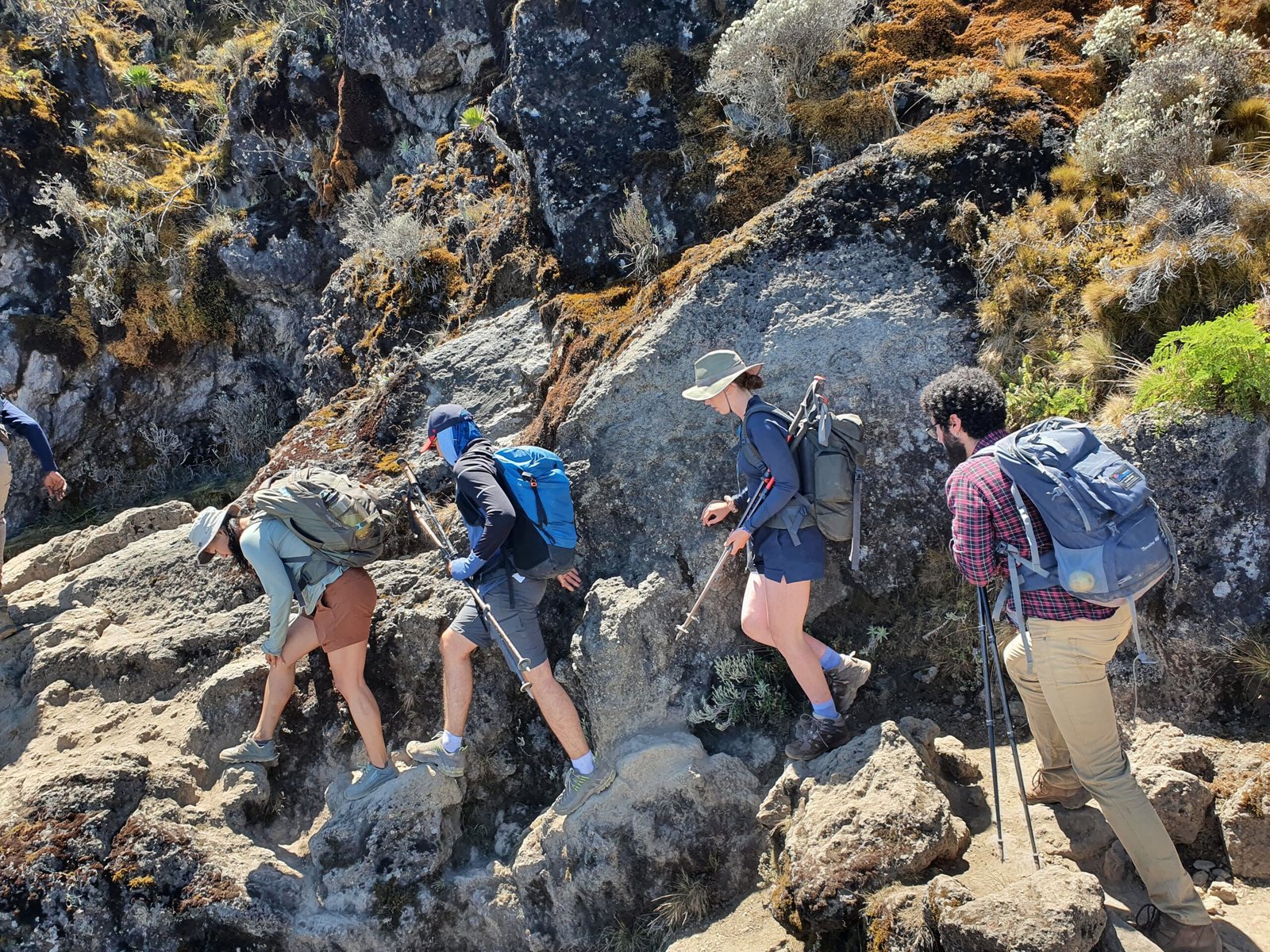The Best Eight-Day Kilimanjaro Lemosho Route to Summit in 2025, 2026, 2027, 2028…..
The Best Eight-Day Kilimanjaro Lemosho Route to Summit in 2025, 2026, 2027, and 2028
The Eight-Day Kilimanjaro Lemosho Route is one of the most recommended treks for adventurers seeking a less-crowded and scenic path to Africa’s highest peak, Mount Kilimanjaro. Offering a gradual acclimatization profile and a spectacular variety of ecosystems, this route gives climbers the best chance to summit successfully while experiencing the beauty of the mountain at a relaxed pace.

Why Choose the Eight-Day Lemosho Route?
Exceptional Acclimatization: With eight days on the mountain, this extended itinerary allows for a slower ascent, giving your body more time to adjust to the altitude, increasing your chances of a successful summit.
Stunning Scenery: From rainforest to alpine desert and glacier-covered peaks, the Lemosho Route provides breathtaking landscapes and rich biodiversity at every stage of the climb.
Fewer Crowds: The Lemosho Route starts on the western side of Kilimanjaro and is much less crowded than the more popular routes, allowing you to enjoy a peaceful and rewarding trek.
Wildlife Encounters: As you trek through the lush rainforests at the base of the mountain, keep an eye out for various wildlife, including monkeys and birds.
Highest Summit Success Rate: The extra acclimatization time means the Lemosho Route boasts one of the highest success rates for reaching Uhuru Peak.
What to Expect on the Eight-Day Lemosho Route
Day 1: Londorossi Gate to Mti Mkubwa Camp
Your journey begins with a drive to Londorossi Gate, followed by a gentle ascent through the verdant rainforest to Mti Mkubwa (Big Tree) Camp.
Day 2: Mti Mkubwa to Shira 1 Camp
Hike through the heather and moorland zones, crossing the Shira Ridge to arrive at Shira 1 Camp, where you will witness the vastness of the Shira Plateau.
Day 3: Shira 1 to Shira 2 Camp
A relatively easy trek across the plateau, offering panoramic views of the mountain and surrounding plains, ending at Shira 2 Camp for acclimatization.
Day 4: Shira 2 to Barranco Camp via Lava Tower
Climb to the impressive Lava Tower at 4,600 meters before descending to Barranco Camp. This day is crucial for acclimatization, despite the higher altitude at Lava Tower.
Day 5: Barranco Camp to Karanga Camp
Begin your day by tackling the famous Barranco Wall, followed by a scenic trek to Karanga Camp. This is one of the most exhilarating days on the trail.
Day 6: Karanga to Barafu Camp
A steady ascent to Barafu Camp, where you’ll rest and prepare for your summit night. The excitement builds as you near the final ascent.
Day 7: Barafu to Uhuru Peak and Descend to Mweka Camp
The highlight of your journey begins at midnight. You’ll reach Uhuru Peak, the roof of Africa, at dawn, rewarded with an unforgettable sunrise. After celebrating your achievement, descend to Mweka Camp for rest.
Day 8: Mweka Camp to Mweka Gate
A final descent through the lush rainforest brings you to Mweka Gate, where you’ll celebrate your successful summit and receive your Kilimanjaro certificate.
When to Climb the Lemosho Route in 2025, 2026, 2027, and 2028?
The best times to climb the Lemosho Route are during Kilimanjaro’s dry seasons:
January to March: Ideal for those looking for cooler weather and fewer crowds.
June to October: The most popular time to climb due to warm, dry conditions, offering stunning clear skies for photography.
FAQs about the Eight-Day Lemosho Route
What makes the Eight-Day Lemosho Route different?
The extra day allows for a more gradual ascent, improving acclimatization and boosting your chances of reaching the summit while providing time to take in the stunning views.
Is the Lemosho Route suitable for beginners?
Yes, while physically demanding, the extra days provide better acclimatization, making it suitable for beginner trekkers who are fit and determined.
Can I climb Kilimanjaro in the rainy season?
While Kilimanjaro is climbable year-round, it’s best to avoid the rainy months of April, May, and November. For the best conditions, aim to climb between January-March or June-October.
Book Your Eight-Day Lemosho Route Trek for 2025, 2026, 2027, or 2028
Secure your place for an unforgettable adventure on Kilimanjaro’s Eight-Day Lemosho Route. With an extended itinerary that maximizes your chances of success, this is the best way to experience the natural beauty and wonder of Mount Kilimanjaro.
Inclusions
All transfers to the mountain and back to your Moshi hotel
Professional, experienced, mountain guides
Guides, Porters, Cook salaries and park fees
Quality, waterproof, four-season mountain sleeping tents (on twin sharing basis)
Sleeping Mattress
Emergency Oxygen Cylinder
All meals while on the Mountain
Quality Mess tents with table and chairs
Large portions of fresh, healthy, nutritious food
Clean, purified drinking water
Conservation fees (part of park fees)
Camping or Hut fees (part of park fees)
Rescue fees (part of park fees)
VAT (18% charged by the Government)
Kilimanjaro summit certificate
Exclusions
Tanzania Visa
International and domestic flights
Hotel (available as an optional addon)
Transfers (available as an optional addon)
Personal trekking equipment such as sleepings bags, hiking boots, clothes, etc (available for renting)
Tips and gratuities
Travel insurance
Personal Expenses (e.g. laundry, telephone, beverages, etc.)
Meals not listed in the itinerary
Liquors, beers and bottled beverages
Surcharge for online payment of advance and balance (5% on each payment)

